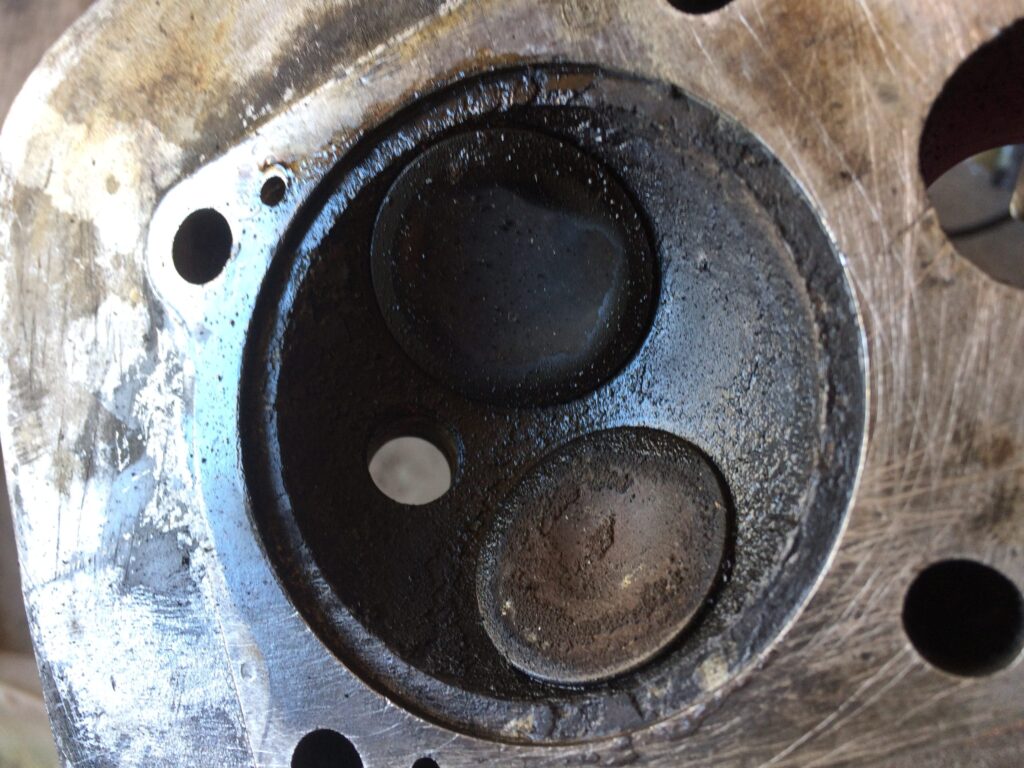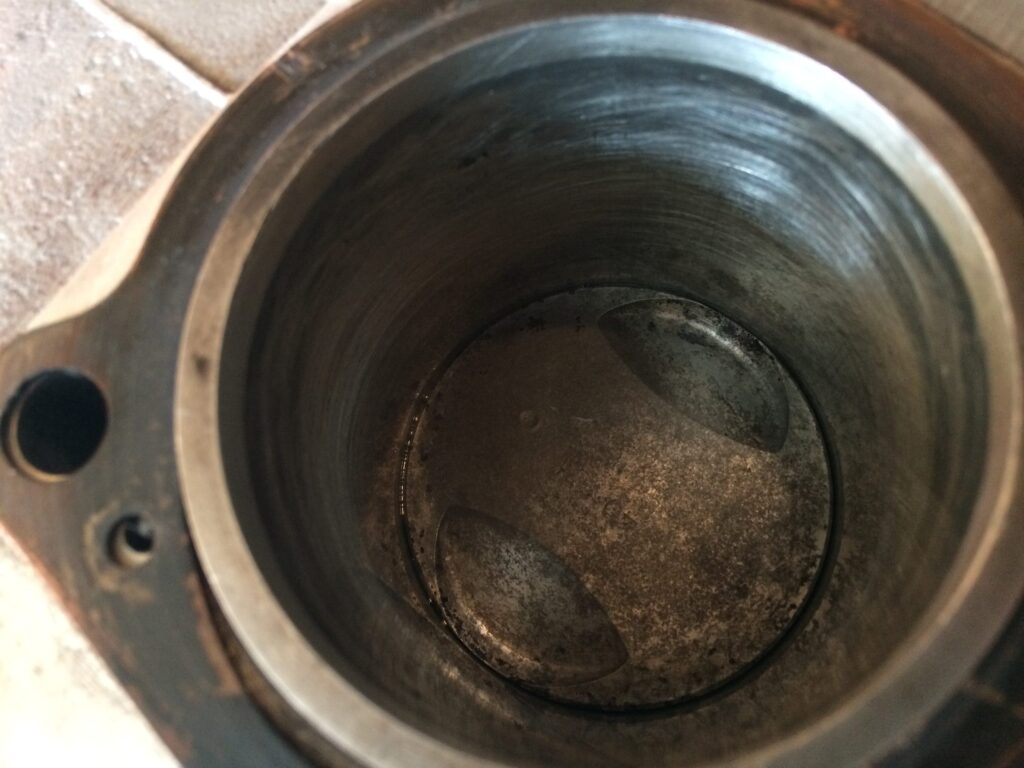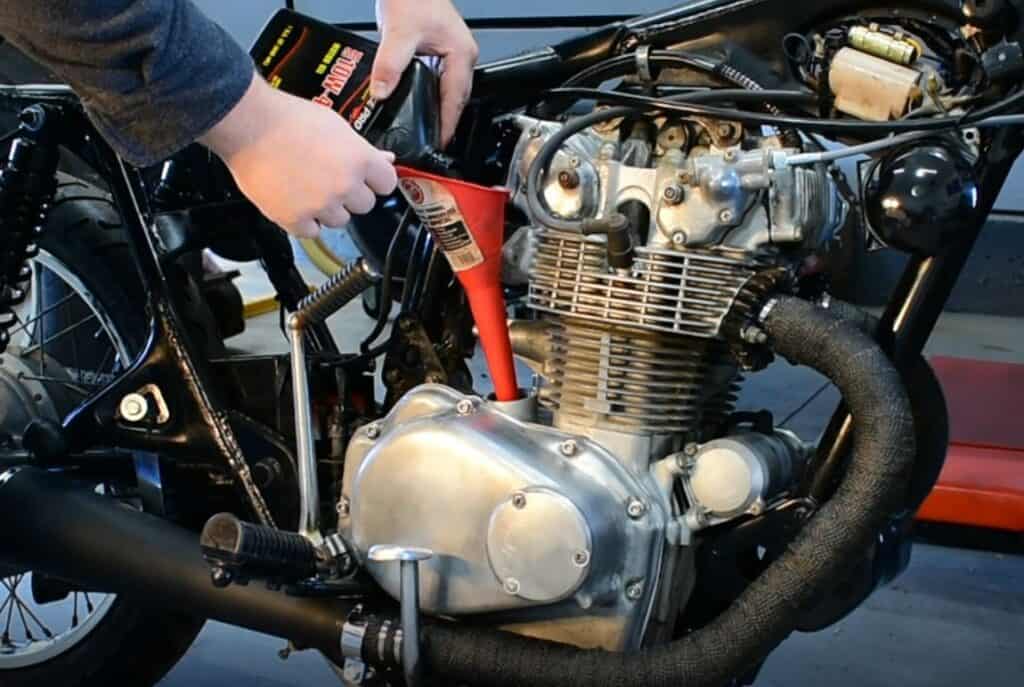
The engine to a motorcycle is the heart of the whole vehicle. Without it, you wouldn’t be able to get anywhere unless you’re willing to push it. That’s why performing proper maintenance on the engine is so important to the life of the motorcycle.
The concept of engine oil is a basic understanding for most, yet there are still a handful of people who don’t fully know what it’s function is and why it’s so important. Unfortunately, there are too many cases when a motorcycle runs out of oil.
What happens when a motorcycle runs out of oil? When a motorcycle runs out of oil, the engine begins to lose it’s lubricating and cooling properties. The friction between the piston and cylinder walls can become too hot which ultimately fuses them together. When those start to fuse, the connecting rods, crankshaft, and valves could potentially break. Essentially, you risk engine seizure.
Being a motorcycle restorer and a mechanical engineer with an automotive engineering background, I can explain the consequences of running low on oil while riding and explore the potential risks and repercussions that every rider should be aware of. So buckle up (or rather, strap on your helmet), as we uncover the truth about what happens when a motorcycle runs out of oil.
What Happens When A Motorcycle Runs Out Of Oil
I have restored almost two dozens motorcycles and a handful of them weren’t properly taken care of, meaning the previous owners were a bit too thrifty when it came to oil changes. This is one thing that I don’t recommend you try to save money on because it’ll cost you a lot more down the road.
Maintaining a motorcycle is easier than maintaining a regular car. But some concepts are the exact same and should be done with caution and awareness; oil maintenance is included as one of those exceptions.
The process of oil circulation on a motorcycle starts at the bottom of the engine in the oil pan. As soon as you turn on your motorcycle, the oil pump starts circulating oil through the oil filter, gets cleaned, then goes throughout the engine.
There are passages all over the engine. Some oil sprays up on the bottom of the piston as it’s going up and down which cools and lubricates it. Some of the oil goes all the way to the top of the engine and lubricates the valves that are moving up and down. Some of the oil also goes to the timing chain as well as the clutch.
When a motorcycle runs out of oil, the engine will begin to overheat and potentially ruin the engine altogether. The pistons will likely seize within the cylinder walls because oil acts as both a lubricant and as a cooling agent.

If you loose your lubrication and cooling, the piston is going to get hotter and hotter as it rubs on the sides of the cylinder walls thousands of times per minute. Eventually, the pistons will weld themselves to the cylinder walls (pictured above) because of the friction between them. This will ultimately cause the engine to seize.
The piston connecting rods, crankshaft, and valves will likely break as a result of the piston seizing to the cylinder walls. On some motorcycles, it is the same oil that lubricates and cools both the engine and the transmission (click here to learn more about this). Going without oil on an engine like this could cause damage to both of these vital components.
Symptoms Of Low Oil In A Motorcycle
There are a few signs you should look for that can indicate your motorcycle is low on low. It’s important you become familiar with these signs because it could mean the life of your motorcycle.
You should be checking the dip stick on your motorcycle every time you fill up with gas. Most dip sticks will have an indicator at the end that will tell you whether or not you need oil. If that shows you have low oil, you’ll need to immediately add some more.
If you have a newer motorcycle, you’ll likely have a gauge that will tell you when your oil is low. That is a light you should never ignore and if it comes on, you should stop everything you’re doing and immediately add some oil to your bike.
Sometimes low oil can be indicated by an overheating engine. Whether you have a gauge that tells you your engine temperature is too hot or your engine is giving obvious signs of overheating such as smoke, you may be low on oil.
It is especially important to attend to this promptly if your engine is strictly air cooled. Some situations such as hot days or traffic will make a motorcycle engine overheat; stay on top of your oil levels if you know you’re going to be in situations like these.
Anytime you hear a clunking sound, you should immediately stop your motorcycle and assess the cause of the sound. An obvious symptom of low motorcycle oil is the sound of metal rubbing or hitting which means the components inside the engine aren’t getting enough lubrication.
A burning smell could also indicate you have low oil in your motorcycle. The smell of burning metal is similar to what it smells like when metal is getting welded or cut by a grinder. If you ever smell anything like that, pull over immediately and check the status of your oil. The smell of burning metal could be coming from the pistons inside your engine.
How To Fix Problems Caused By Running On Low Oil

Most of my restorations were bikes that had been sitting for years mostly because they died from lack of maintenance. Lack of oil care was relevant to almost every motorcycle I’ve fixed. This is what I’ve learned:
If you stopped your motorcycle because you heard the sound of metal clunking or rubbing together, or you could smell burning metal, you may not have done as much damage as you think. When the pistons get really hot, they’ll expand first before they weld themselves to the piston walls. It’s possible that that they expanded but cooled off and haven’t fused themselves quite yet.
Before trying to turn on your motorcycle, put your motorcycle into fifth gear while it’s off and try to roll it back and forth. An unseized engine will easily move back and forth with no resistance. Stop moving it back and forth if you notice any clunking sounds or if it stops itself and resists at all. That is a sign that something isn’t working right in the engine.
If your motorcycle easily moves back and forth, change the oil and make sure you have the appropriate level in there. You may attempt to start the motorcycle with your hand on the kill switch. Any clanking or rubbings sounds or the smell of burning metal will call for you to immediately turn it off.
In any case, if you suspect your motorcycle ran out of oil, it’s always a good idea to take it in to a mechanic to have it checked out. Fixing and rebuilding an engine due to lack of lubrication should be left to the professionals and shouldn’t be performed by an amateur in their garage. For more information about motorcycle engine seizure, see my article here.
Regular Engine Maintenance And Prevention
You should always take time for regular, routine oil changes on your motorcycle. A motorcycle should receive an oil change about every 4,000 miles or every six months, whichever comes first. Put it in your planner or set a reminder on your phone so you don’t forget.
Also remember that you need to check the level of your oil several times between oil changes. I like to check the oil on my motorcycle every time I fill up with gas. If you have an oil leak, you should be checking the level of your oil every week since that obviously increases your risk of running out of oil. See my article here for more information on servicing your motorcycle.
Conclusion
Oil is one of the most essential components to the life of a motorcycle. Without it, the engine internals will not get lubricated and cooled properly which can ultimately lead to the engine seizing. Routine oil changes and regular oil level checks are essential so don’t forget this simple step!
Have you guys ever gotten close to running out of oil in your motorcycle? What was your experience like and was there any damage done?
Related Questions
Can a motorcycle use car engine oil? It is okay to temporarily use car engine oil in a motorcycle though it should not be used frequently. If car engine oil has been put in your motorcycle, your oil should be changed to motorcycle oil as soon as you get a chance. Click here to see my article for more information.
